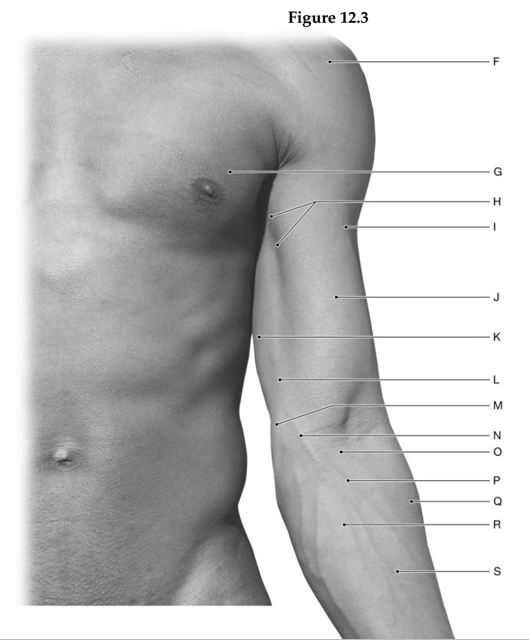Cardiac muscle tissue __________.
a. will not contract unless stimulated by autonomic nerves
b. is innervated mostly be neurons associated with the sympathetic division of the autonomic nervous system
c. has its own intrinsic conduction system that can set the pace of the beating heart
d. will not contract unless stimulated by somatic motor neurons
Ans: c. has its own intrinsic conduction system that can set the pace of the beating heart
You might also like to view...
Secretion of atrial natriuretic peptide
A. increases potassium excretion. B. decreases sodium excretion. C. increases sodium excretion. D. decreases potassium excretion.
Using the figure above, identify the labeled part.

1. Label A: ______________________________
2. Label B: ______________________________
3. Label C: ______________________________
4. Label D: ______________________________
5. Label E: ______________________________
6. Label F: ______________________________
7. Label G: ______________________________
8. Label H: ______________________________
9. Label I: ______________________________
10. Label J: ______________________________
11. Label K: ______________________________
12. Label L: ______________________________
13. Label M: ______________________________
14. Label N: ______________________________
15. Label O: ______________________________
16. Label P: ______________________________
17. Label Q: ______________________________
18. Label R: ______________________________
19. Label S: ______________________________
20. Label T: ______________________________
21. Label U: ______________________________
The stratum basale is the deepest layer of the epidermis. The cells of the stratum basale rest on the basement membrane and grow and divide to replenish the skin cells of the epidermis. The stratum basale is an organ.
Answer the following statement true (T) or false (F)
Which of the following statements concerning liver sinusoids is true?
(a) they are continuous with bile canaliculi (b) they are surrounded by a well developed basal lamina (c) they are lined by continuous endothelial cells (d) they deliver blood to the central vein (e) they deliver blood to the portal vein